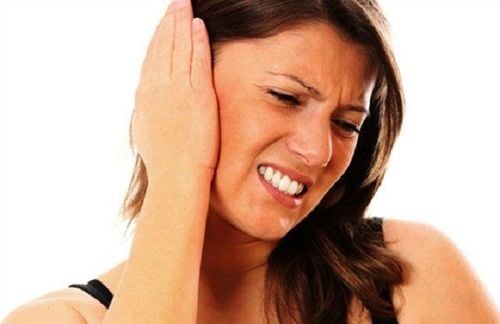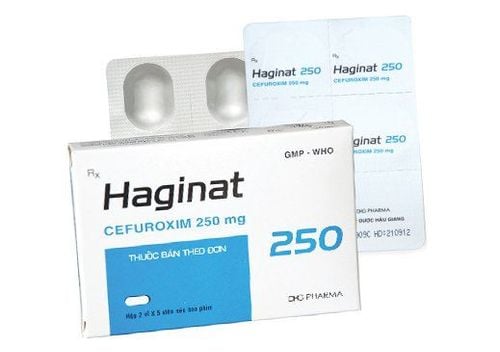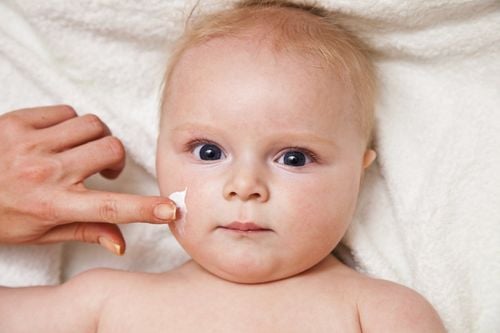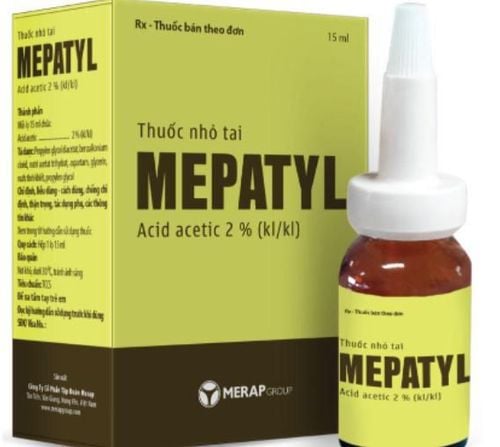This is an automatically translated article.
Otitis externa is a common ailment, especially among children and swimmers. Although this disease is not as dangerous as otitis media, if not treated in time, it can affect the child's hearing later in life.
1. What is otitis externa?
Otitis externa is an infection of the lining of the outer ear canal, which connects the eardrum to the outside of the ear. Otitis externa is common in children, adolescents, and adults who enjoy swimming.
Because this disease is common in swimmers, it is also known by another name that is swimmer's ear.

Viêm tai ngoài thường gặp ở những vận động viên bơi lội
2. What is the cause of otitis externa?
Otitis externa is usually caused by exposure to moisture. Swimming or bathing too often can lead to an outer ear infection. Water left inside the ear canal can become a breeding ground for bacteria and fungi.
Pond water often contains many bacteria that are the main culprits of otitis externa. The same goes for pool water, because chlorine in swimming pool water can kill beneficial bacteria in the ear canal, creating conditions for harmful bacteria to enter. Even getting too much water from the bath or shower into the outer ear canal can cause otitis externa.
Infection can occur if the thin layer of skin that forms the ear canal is injured. Vigorous scratching, using headphones or using a cotton swab in the ear can damage this delicate skin.
When this layer of skin is damaged and inflamed, it can create room for bacteria to grow. Earwax is the ear's natural defense against infection, but frequent exposure to moisture and scratching can strip the wax out of the ear, increasing the risk of infection.
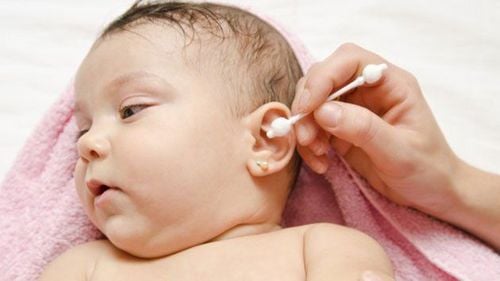
Viêm tai ngoài có thể xảy ra khi trẻ tiếp xúc thường xuyên với hơi ẩm
3. Why do children who don't go swimming and don't bathe regularly still get otitis externa?
In addition to water being the most common culprit for otitis externa, there are other possible causes of this disease, such as trauma to the lining of the ear.
Children may have poked something in their ears such as sticks, nuts or bits of food, or scratched the inside of their ears. This inadvertently sets the stage for an infection that causes otitis externa.
Have you ever used cotton swabs to remove baby's earwax? This is a common practice among most people. But it's not a good idea because earwax protects the ear by holding in dirt and bacteria. The tiny hairy gums of the ear canal then sweep away the waxy bacterial membrane.
When you use a cotton swab to remove your baby's earwax, you may have inadvertently pushed the earwax deeper into the ear canal. At that time, this area will become a breeding ground for bacteria.
In addition, skin conditions such as eczema, psoriasis can also make children more susceptible to otitis externa.
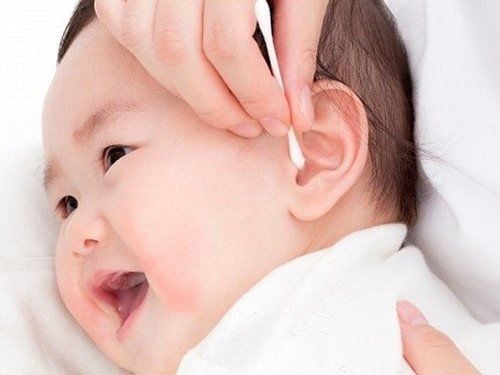
Lấy ráy tai không đúng cách có thể gây viêm tai ngoài
4. Signs of otitis externa in children
Symptoms of otitis externa are usually mild at first, but they can become worse if the infection is left untreated. Otitis externa is divided into three levels with the following manifestations:
4.1 Mild otitis externa
Patient feels itching in the ear. Looking inside the outer ear canal shows slight redness. The discomfort in the ear may be aggravated by pulling on the outer ear. or pressing on the swelling in front of the ear. There may be clear, odorless discharge coming out of the ear canal.
4.2 Moderate otitis externa
Patient feels intense itching. More and more pain in the ear. Lots of fluid out of the ear canal. The patient feels that the ear is partially blocked due to swelling and fluid. The patient has hearing loss or has a feeling of squeezing in the ear.
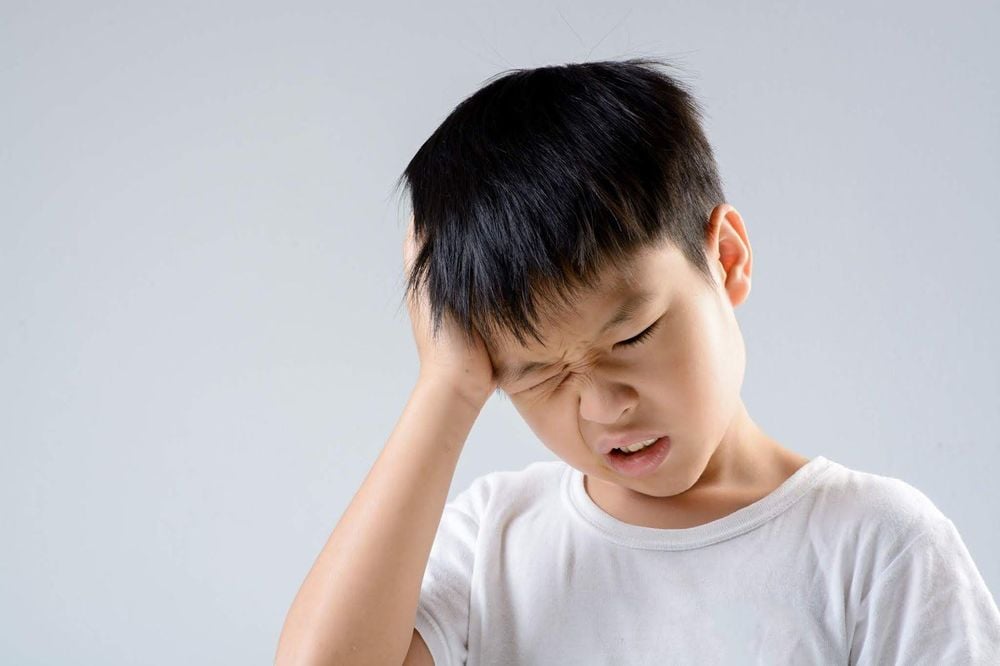
Trẻ bị đau tai nhiều là dấu hiệu cảnh báo nguy hiểm của viêm tai ngoài
4.3 Severe otitis externa
Severe ear pain that may radiate to the face, neck or side of the head. Complete blockage of the ear canal. Redness or swelling of the outer ear Swollen lymph nodes in the neck . Fever. Older, talking children can describe to us the symptoms they are experiencing, making the diagnosis easier.
As for infants and young children who cannot speak yet, they will not be able to tell us what symptoms they are feeling. However, you can still recognize the symptoms of otitis externa in young children such as:
Your baby reacts or screams when you rub or pull on his or her ear. The child does not respond to some sounds. Children may be irritable or restless. The child refuses to eat, this may be because the earache symptoms increase when the child chews. Children lose balance. When you examine your child's ear, you may find the outer ear canal is red or scaly, and yellow pus may be seen.
5. Some complications of otitis externa
If an outer ear infection is left untreated it can lead to a number of complications, including:
Abscess : An abscess can develop around the affected area in the ear. An ear abscess may heal on its own or your doctor may need to drain it. Ear canal narrowing: Long-term otitis externa can cause narrowing of the ear canal. Narrowing of the ear canal can affect hearing and in severe cases can cause deafness. Perforated eardrum: Usually a complication of an outer ear infection caused by objects inserted into the ear. Necrotizing otitis externa: In rare cases, otitis externa can lead to gangrene. This is an extremely serious complication when the infection spreads to the cartilage and bone surrounding the ear canal.
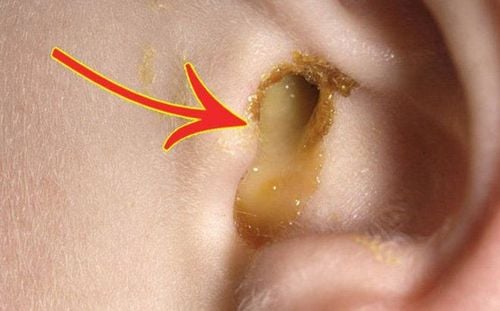
Thủng màng nhĩ là biến chứng nguy hiểm của viêm tai ngoài
6. How to treat otitis externa in children?
After examining and assessing the child's level of otitis externa, the doctor will offer a suitable treatment plan for each child. Some common points in the treatment of otitis externa in children are:
Keep the child's ears dry. Your baby's doctor may prescribe over-the-counter ear drops or prescription drops that contain a combination of medicines to reduce inflammation and kill bacteria. If your child has a severe infection, the doctor may prescribe antibiotics or steroids. You can ask your doctor if you can give your child Ibuprofen (for babies 6 months and older) or Acetaminophen for pain relief. Do not give aspirin to a child to reduce fever or pain, as it can put a child at risk of Reye's syndrome, a rare but potentially life-threatening illness.
Applying warm compresses to your baby's ears can also help relieve pain.
7. How long does otitis externa in children last?
Children with otitis externa may feel better within a few days and the infection should go away about a week after you start treating your baby.
If the infection does not improve after four or five days of treatment, you should talk to your doctor about the condition.
You need to take the child to the emergency room if the child suddenly has a swollen face, severe pain or fever. Because in extremely rare cases, an infection in the outer ear can spread to the inner ear, the underlying bone, and into the bloodstream, endangering the child.

Trẻ bị viêm tai ngoài kèm sốt, ba mẹ cần đưa trẻ đi gặp bác sĩ
8. How to prevent otitis externa in children?
Some simple things below can help you prevent otitis externa in children:
Clean your baby's ears, keep them dry. Dry your ears thoroughly after swimming or bathing. Dry only the outer ear, slowly and gently with a soft cloth or towel. Do not use cotton swabs to clean the inside of the ear. Use a soft cloth to wipe the outside of the ear. Try to minimize the amount of water that gets into your baby's ears when bathing or swimming. If your child is prone to otitis externa, talk to your doctor about using preventive drops. Avoid letting children put foreign objects in their ears. Otitis externa is a common disease in children, although not dangerous, if not treated promptly, it can lead to other more dangerous complications. Parents need to pay special attention to the signs of illness in their children.
In the process of taking care of a child who needs consultation and examination, you can take your child to the Pediatrics Department at Vinmec General Hospital for advice and examination by experts. Here, based on the diagnosis results, the doctor will have a treatment method for each specific case to bring the best effect.
In addition, in order to prevent diseases that babies often get, parents should pay attention to nutrition to improve children's resistance. At the same time, add supporting foods containing lysine, essential micro-minerals and vitamins such as zinc, chromium, selenium, B vitamins,... snacks and less digestive problems.
Parents can learn more:
Why do you need to supplement Lysine for your baby?
The role of zinc - Guidelines for reasonable zinc supplementation
Please visit the website Vinmec.com regularly and update useful information to take care of your baby and family.
References: abycenter.com, healthline.com




